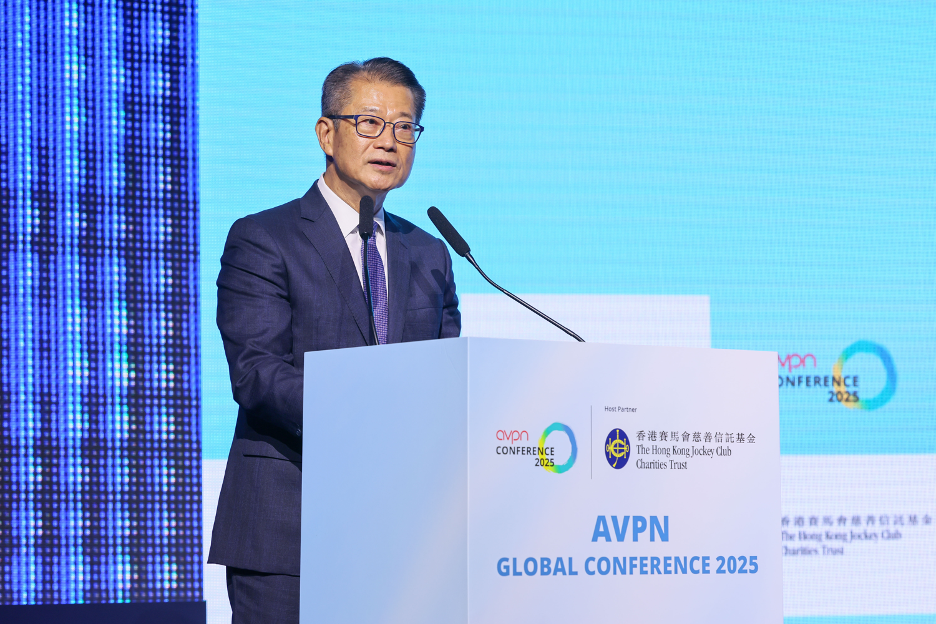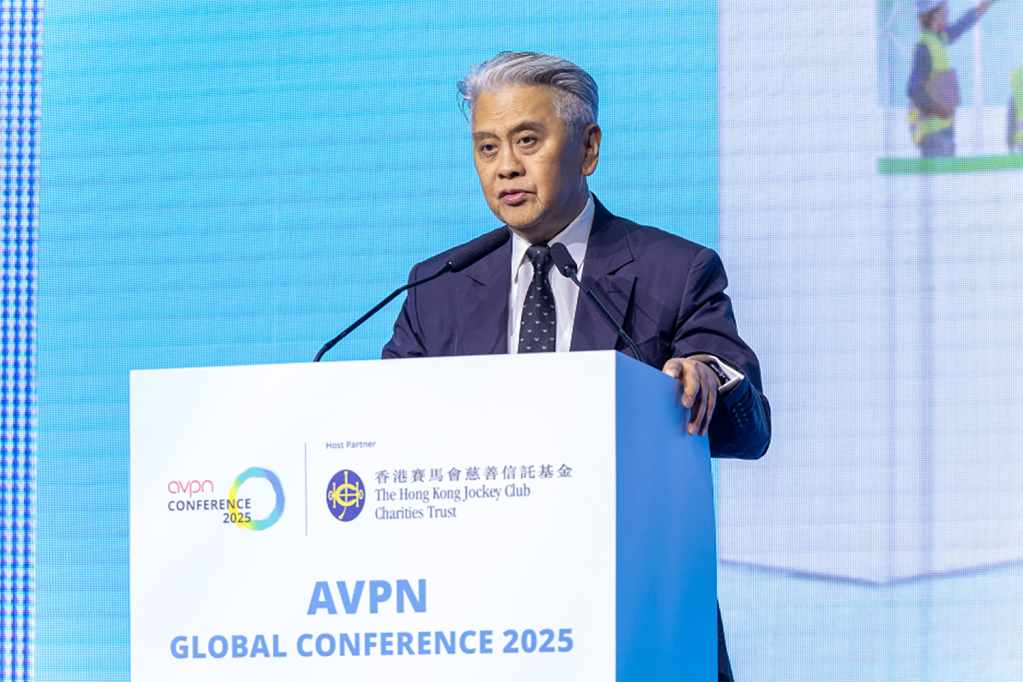Impact Investing as a Driver for Sustainable Development in the Asia-Pacific
A synthesis report produced by FP Analytics with support from AVPN
The global development landscape is shifting rapidly. Official Development Assistance (ODA) has been decreasing for years, reaching a low point in 2025 with the shuttering of USAID and cuts to aid budgets across Europe. This downturn comes at a time when inequalities among and within countries are growing, and developing economies, especially across the Global South, are grappling with complex challenges such as climate change, armed conflict, accumulating public debt, and more. Developing countries need to invest an additional USD 4.2 trillion per year to meet the Sustainable Development Goals (SDGs) by 2030, and over half of that sum is needed by developing countries in Asia alone. Considering the urgency and complexity of sustainable development, stakeholders are searching for other sources of capital, including non-Western donor countries and multilateral development banks led by the Global South. As Naina Subberwal Batra, CEO of the AVPN, said in her welcome address at the AVPN Global Conference 2025, “We cannot close this gap with business as usual. We need to make big bets.”
One of those bets is that private capital from philanthropists, high-net-worth individuals (HNWIs), and impact investors can drive sustainable development. Private capital firms globally are estimated to have over USD 9 trillion in available funds, and investors are increasingly using their capital to generate social and environmental returns in addition to economic ones. The global impact investment market more than doubled between 2020 and 2024, growing from USD 715 billion to USD 1.57 trillion, and while the majority of that capital is concentrated in the Global North, there is a small but expanding impact investment ecosystem in Asia. AVPN is Asia’s largest social investment network, with over 700 members active in more than 43 markets. Its annual Conference serves as a vital forum for Asian leaders to collaborate, share strategies for leveraging capital for social impact, and develop solutions to complex challenges across the region. By fostering dialogue, trust, and regional cooperation, AVPN reinforces Asia’s growing role as a driver of inclusive and sustainable global progress. The AVPN Global Conference 2025, held under the theme Asian Leadership for Inclusive World and with host partner The Hong Kong Jockey Club Charities Trust (HKJCCT), convened key stakeholders from across the impact investment sector in the Hong Kong Special Administrative Region (SAR), China. This synthesis report highlights key takeaways from the conference, namely (1) the urgency and opportunity for Asian leadership in sustainable development, (2) the role of impact-focused private capital in complementing official aid, and (3) Hong Kong as a natural locus for innovative impact investment.
Featured keynotes from leaders:
- Naina Subberwal Batra, CEO, AVPN
- The Honourable Paul Chan Mo-po, GBM, GBS, MH, JP, Financial Secretary, Government of the Hong Kong SAR
- Daniel Fung, Vice-Chairman, Financial Services Development Council
Despite Mounting Challenges, Asia Is Well-Positioned to Lead Its Own Sustainable Development
Asia is currently navigating a complex landscape of social and environmental challenges, requiring substantial and sustained investment to achieve the SDGs. Asia is warming at a rate twice as fast as the global average, and climate change has caused heatwaves, coastal urban flooding, biodiversity and habitat loss, and sea level rise throughout the region, all of which disrupt ways of life and undermine development progress. Climate shocks are worsening poverty and inequality in Asia, and 266 million people in the region could be pushed into poverty by 2040 without concerted action to strengthen social resilience. The negative impacts of climate change are further exacerbated by constrained national budgets and the previously mentioned rollback of aid. ODA to Southeast Asia is already well below pre-pandemic levels and is expected to decline further due to an anticipated 20 percent decrease in bilateral aid from Western donors.
Despite these headwinds, a parallel story is unfolding—one of resilience, innovation, and growing leadership across the region. Summarizing the opportunity for Asian leadership in impact investment and development, Naina Subberwal Batra said that “the Asia-Pacific is not just a key player but is a critical driver of global impact.” She noted that the region’s diversity, which encompasses thousands of languages, faiths, and cultures, is among its greatest strengths and explained, “We need our Asian voices to shape the agenda … set the pace and offer solutions that are rooted in the reality of our region.” This growing sense of regional confidence underscores the pivotal role that impact-minded investors can play in translating Asia’s vision for its development into tangible, sustainable outcomes.

While participants at the AVPN Global Conference 2025 expressed concern about the broader aid landscape, they were optimistic that Asia is in a strong position to assume leadership over its own development. As Paul Chan Mo-po, Financial Secretary of Hong Kong, said in his welcome address, the continent “presents both enormous needs and tremendous opportunity for impact investing.” Asia is home to over 60 percent of the world’s population, and the continent fueled 57 percent of global GDP growth between 2015 and 2021. Its rapid economic growth has led to the expansion of its capital markets — in 2023, private equity firms in Southeast Asia alone held USD 2.3 trillion in readily available capital — and it has also produced a robust class of over 160,000 ultra-HNWIs. The number of family offices — private companies that manage the assets of wealthy individuals or families — quadrupled in Asia between 2020 and 2024, with Hong Kong and Singapore serving as regional hubs for Asian investors. Paul Chan Mo-po emphasized that “many are not just wealthy entrepreneurs. . . . They are impact-minded leaders who seek to define their legacy for positive social and environmental change.”
The Role of Impact Investing in Fostering Sustainable Development
Impact investment, or capital intended to generate social and environmental returns alongside financial ones, has become an important force in Asia’s development landscape. Unlike traditional philanthropy, which relies on grants or donations, impact investment uses market-based approaches to create sustainable change while maintaining accountability and scalability. It spans multiple asset classes, including private equity and debt, and typically targets sectors like renewable energy, healthcare, education, sanitation, and climate change adaptation. Impact investment also intersects with other socially conscious investment strategies, such as Environmental, Social, and Governance (ESG) investment and blended finance, as well as traditional philanthropy.

This global shift is increasingly visible in Asia, where investors and policymakers are adapting the impact investment model to local realities. The landscape of impact investment in Asia is small compared to North America or Europe, but it is dynamic and growing. Across the region, investors, in partnership with governments, philanthropists, and other development stakeholders, are increasingly channeling capital toward enterprises that address pressing social and environmental challenges. In Singapore alone, a ten-fold increase in the number of family offices since 2019 has led to a surge in philanthropy and impact investment, with giving by private organizations in the country doubling between 2022 and 2023.
These investments have been facilitated by initiatives across Asia that seek to promote the use of capital for social impact. An example of this is the Monetary Authority of Singapore’s Financing Asia’s Transition Partnership (FAST-P), a blended finance initiative that seeks to leverage public funds to crowd in private finance and mobilize up to USD 5 billion to support decarbonization and climate resilience projects in Asia. Another organization strengthening the impact investment ecosystem in Asia that was highlighted at the AVPN Global Conference 2025 is the Sustainable Finance Initiative (SFi), a Hong Kong-based platform that convenes impact investors from across Asia and advises on best practices for generating social good with private capital. Naina Subberwal Batra also highlighted Philanthropy Asia Alliance (PAA), which aims to catalyze philanthropic capital to create a positive impact. The PAA recently announced a new Health for Human Potential (HHP) Community, whose goal is to raise USD 100 million to reduce preventable deaths and fight infectious diseases. These organizations reflect a shift in investment strategy in Asia, from profit maximization to purpose-driven growth, where capital is increasingly viewed as a catalyst for inclusive and sustainable progress.
Hong Kong’s Strategic Role in the Asian Impact Investment Landscape
Hong Kong, with its established reputation as a global financial hub, is uniquely positioned to serve as a leading center for impact investment and sustainable finance. The SAR continues to play a critical role as a financial hub and strategic bridge connecting the vast and rapidly developing mainland Chinese market with the broader international investment community. Several factors contribute to Hong Kong’s prominent position. First among them is the SAR’s high concentration of ultra-HNWIs. In 2025, Hong Kong ranked 7th worldwide in terms of billionaire wealth with a total value USD 330 billion, ahead of much larger jurisdictions such as Canada and Italy. The government of Hong Kong has also adopted policies to proactively attract and incentivize impact investment. Paul Chan Mo-po highlighted the SAR’s Policy Statement on Developing Family Office Businesses in Hong Kong, which outlines various efforts, including tax incentives and dedicated public services to assist family offices seeking to establish themselves in the SAR. Daniel Fung, Vice-Chairman of the Financial Services Development Council, introduced the Council’s report titled “Hong Kong: Showcasing how Impact Capital Makes a Difference,” which highlights several initiatives by private actors to support impact investment in Hong Kong. Two of them are the Hong Kong Stock Exchange’s (HKEX) Impact Funding Scheme, which provides grants of up to HKD 2 million to support social enterprises focused on sustainability and inclusion, as well as the Hong Kong Academy for Wealth Legacy’s (HKAWL) iLink Online platform, which connects philanthropists and family offices with high-impact charitable organizations.

Daniel Fung, summarizing the SAR’s position in the impact investment ecosystem, said that Hong Kong’s “growing community of purpose-driven investors, combined with its robust financial expertise and global connectivity,” means that it “possesses all the necessary ingredients to become a leading hub for impact capital, not just in Asia, but globally.” These elements are instrumental in effectively channeling both domestic and international capital towards opportunities that not only generate financial returns but also create profound and lasting positive impact across Asia and beyond. Daniel Fung reflected on how quickly conversations about impact investment have evolved in Hong Kong, saying that they “no longer center on whether private wealth can drive transformative changes, but on how swiftly and effectively Hong Kong can leverage its strengths to lead” in this sector.
Looking Ahead
The AVPN Global Conference 2025 highlighted the growing impact investment ecosystem in Asia. More needs to be done, however; in a 2025 survey of nearly 400 investors worldwide, 70 percent of impact investment was allocated to high-income regions, and only 12 percent to South and Southeast Asia. Going forward, impact-minded investors in Asia and globally need to allocate their funds where there is the greatest need by investing in causes that support sustainable development in addition to generating economic returns. Naina Subberwal Batra emphasized that this is not about making reckless gambles, but rather “well-considered, well-thought-out, calculated investments in innovative solutions that are often overlooked.” To identify such opportunities, stakeholders in the impact investment ecosystem—including HNWIs, philanthropists, traditional investors, and the development sector—need to collaborate with a view to exchanging best practices, joining efforts, and scaling up impact. Forums like the AVPN Global Conference, which will be in New Delhi, India, in 2026, are key for convening leaders across philanthropy and finance, enabling them to cooperate and put forward solutions for more sustainable and equitable growth across Asia.
By Jack Ronan (Policy and Research Analyst).

This synthesis report from FP Analytics, the independent research division of The FP Group, was produced with financial support from AVPN. FP Analytics retained control of the findings of this report. Foreign Policy’s editorial team was not involved in the creation of this content. AVPN did not have influence over the report and does not retain control of it.
